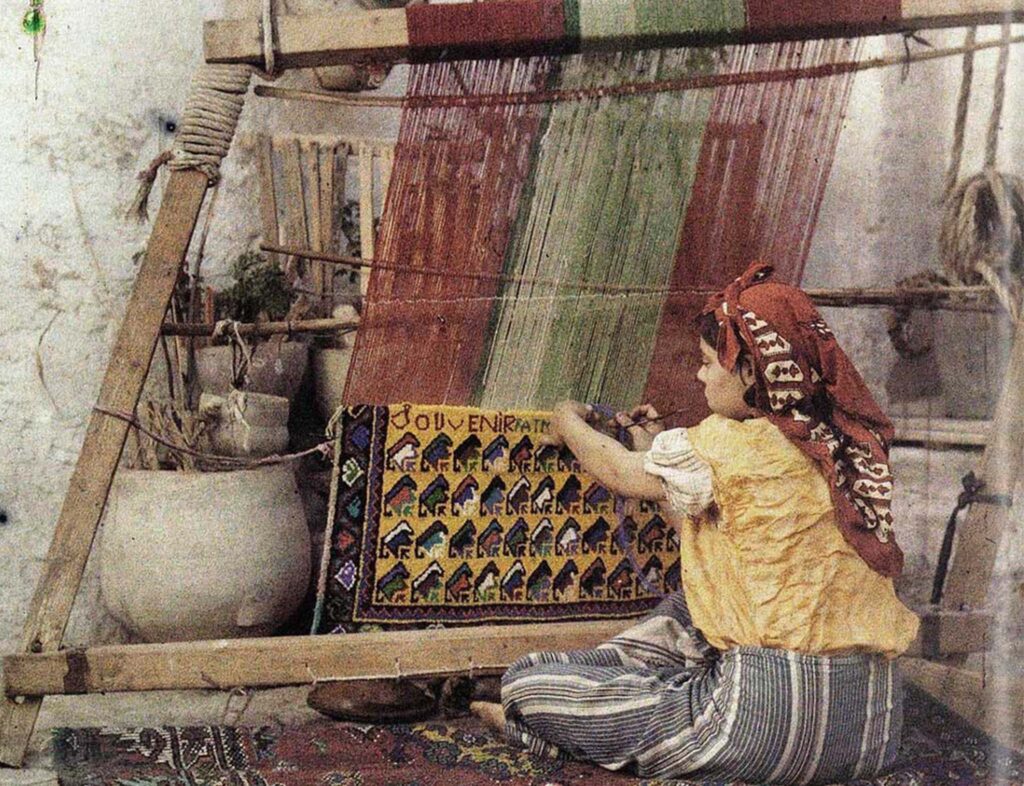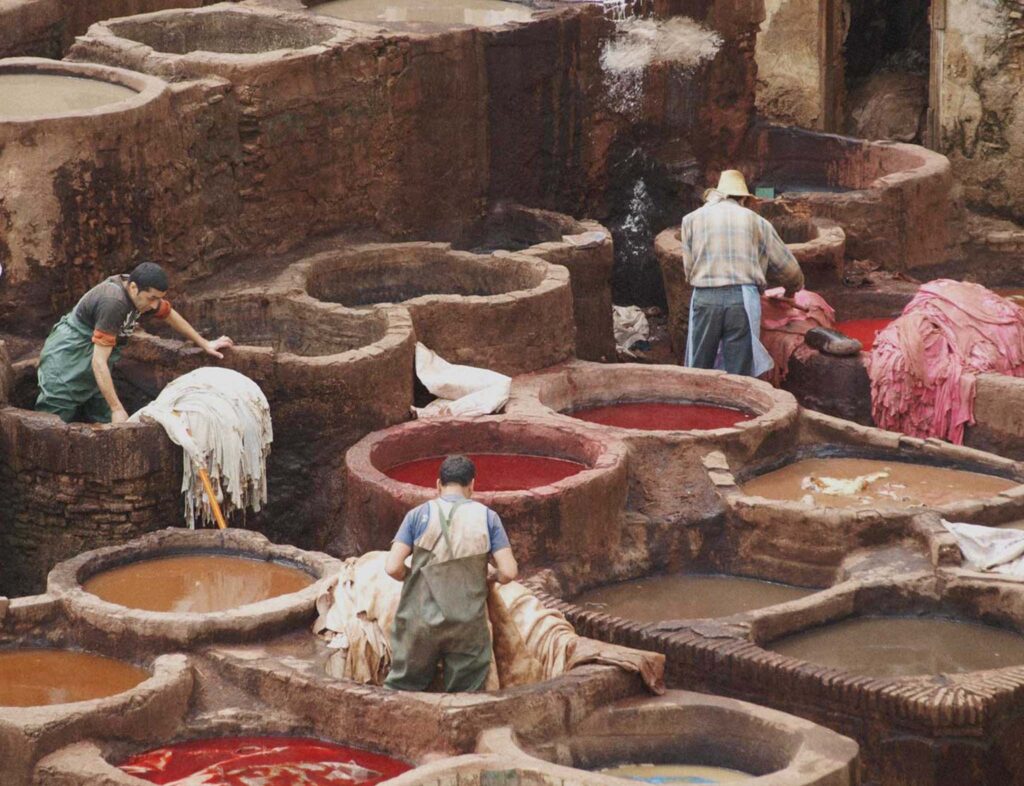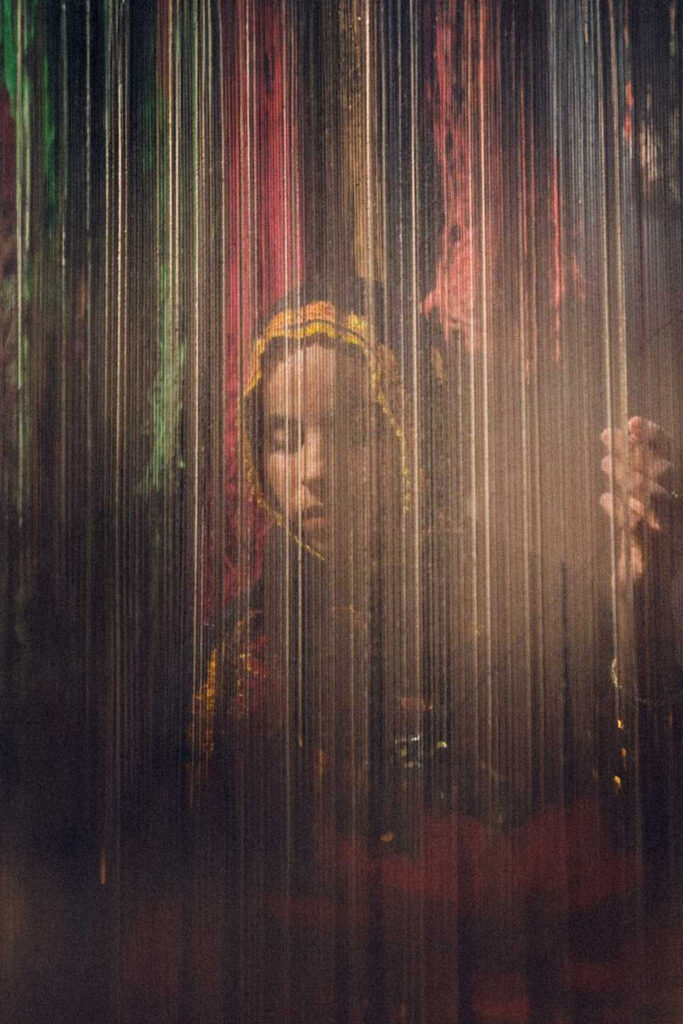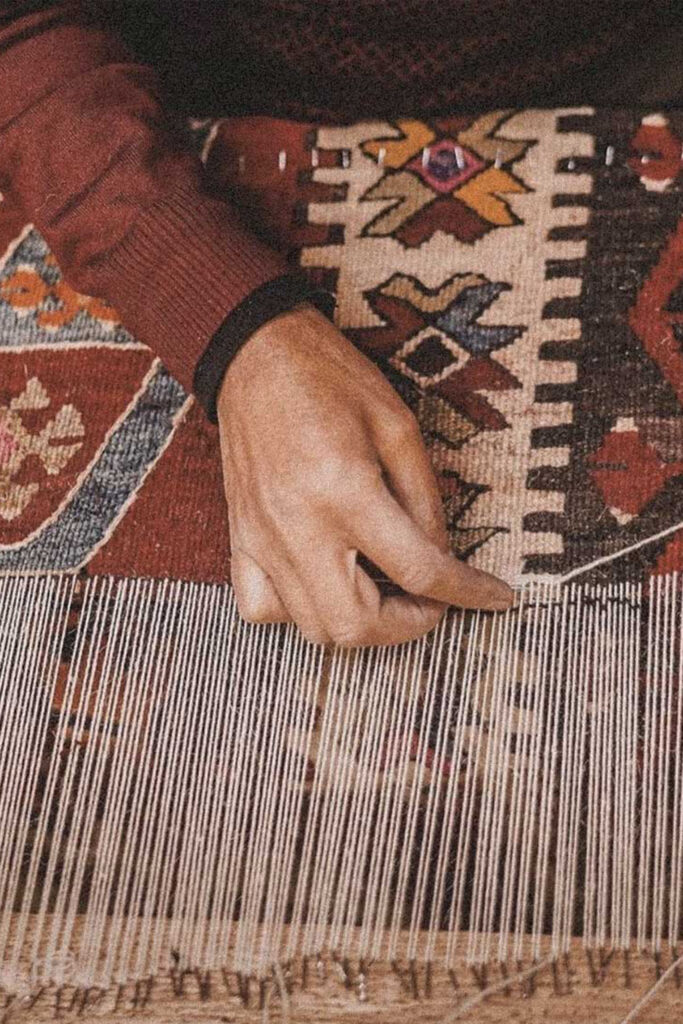Each handcrafted piece carries the essence of a cultural narrative, a connection to the hands that meticulously shaped it, and an individual touch, in contrast to the generic uniformity of the machine-produced garments. These mass-produced items often entail the repression and exploitation of workers involved in the fast fashion supply chain.
Valeria KohnThreads of Tradition Unraveled: Preserving Textile Craftsmanship | Valeria Kohn
Textile craftsmanship is a unique and personal art form. It encompasses a rich tapestry of handmade clothing and decor, with knitting, weaving, and embroidery being just a few threads in the intricate fabric of this art form. It’s an enduring craft that infuses these fabrics with a personal touch and human connection. An act of expression through which a needle transforms into a brush and becomes a portal to transmit anything you want by using colours, threads, textiles, or any inspiration that strikes you, all achieved with the hands. Every stitch becomes a brushstroke, and every thread becomes a shade of the narrative. The fabric is a clean canvas that awaits storytelling as the imagination flows with the infusion of human presence.
The human touch in textiles makes it special—turning the mundane into a masterpiece, one stitch at a time. As a timeless craft, it truly stands the test of time, carrying the emotions and creativity of those who wield the needle. Specifically, the true magic of embroiderers comes from around the world, with different stories, motifs, and materials that change depending on the place.

In the 1800s, textile skills were cherished and passed down through generations, known by all women and some men in the household. But what happened to this fine art? The evolution of technology and subsequent rise of fast fashion have challenged the endurance of these traditional practices.
The art imparted with so much care and precision that once adorned garments and homes is now being overshadowed and has become a casualty of the mass production of cheap garments. Undershadowing the real meaning and mastery of craftsmanship.
As fast fashion takes over the industry, it is becoming almost impossible for brands and their consumers to slow down.
William Morris was a British textile designer and prominent figure in the Arts and Crafts Movement, which surged after the Industrial Revolution as a protest against mass production to revive the beauty of craftsmanship and traditional techniques. Morris was inspired by the natural world and by life. He founded his company, ‘Morris & Co.’ in the 1800s, which also played a significant role in the movement and whose brand values reflected his own.
On the other hand, the same Morris & Co., in 2018, collaborated with H&M, one of the largest fast-fashion companies out there, raising thought-provoking questions. How is it possible that the company that was explicitly against what H&M represents ended up collaborating with them? Where did Morris’ values and his vehement opposition to the dehumanising effects of mass production go? Are the revolutionary and socially conscious pillars of his company irrelevant under the pressure of the modern market? This collaboration becomes a lens to explore the intersection of art, commerce, and the tension between humans and timeless principles with the changing landscape of the fashion business and its machinery.

We must learn to draw a line between cultural craftsmanship and mass production.
Each handcrafted piece carries the essence of a cultural narrative, a connection to the hands that meticulously shaped it, and an individual touch, in contrast to the generic uniformity of the machine-produced garments. These mass-produced items often entail the repression and exploitation of workers involved in the fast fashion supply chain. As consumers, we have to give well-deserved credit to artisans, help preserve their cultural authenticity, pay a fair price, and avoid getting sucked into the vicious cycle of consuming mass-produced garments.
Otavalo, a town located in northern Ecuador, is also called the ‘Intercultural Capital of Ecuador’ because of its rich historical and cultural significance. It is home to the indigenous group ‘Kichwa’, renowned for their exceptional craftsmanship and artisanal skills. It has even become the greatest artisan market in South America, where people travel the world selling their products. Inside their wide range of products, they have many textiles and embroidery in clothing handmade by local artisans and master craftsmen. Some textiles found are hand-woven ponchos, sweaters, rugs, scarves, pants, dresses, shawls, and dresses in every size and colour.
The people from Otavalo are well known for their weaving, which holds deep cultural significance. Generation after generation, people inherit these skills from their ancestors. Everything they used to wear was 100% hand-made by using wooden looms and sheep’s wool. Even the process of making the wool went through a journey, which included spinning and dyeing (with natural dyes) the yarn by hand. Weaving the yarn into this different clothing or decorative item takes time since it is such a detail; it has a human touch, which adds unique value to the piece.
Blanca, a member of a local family that produces clothing and sells it at the artisan market in Quito, where various crafts from Otavalo are showcased, notes a prevalent shift towards the use of machine-embroidered clothes over hand-stitched ones.
“People do not value the worth of hard work it takes to hand-stitch the embroidery; when it comes down to it, programming a machine to produce machine embroidery is seen as a more profitable venture.”
Blanca
She is one of the few in her generation who was taught and wanted to learn this skill. Blanca had some hand-made shirts that, according to her, can take up to 3 months to make. Computers are taking up this job not only because of the value that is lost but also because people now do not want to spend their time on their traditions.


In the threads of embroidery, we witness a timeless art form that bridges generations and cultures. The contrast between historical principles and modern collaborations reflects on how art and commerce come together. As machines increasingly encroach upon tradition, Otavalo, a hub of artisanal mastery, faces a significant challenge. In a world dominated by fast fashion, preserving the cultural narrative woven into handcrafted pieces becomes essential.
The human touch in every stitch should be valued, acknowledging the stories and traditions that make each garment truly a work of art.
Words by Valeria Kohn




